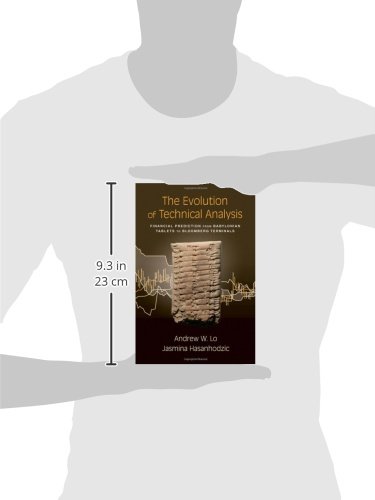



The Evolution of Technical Analysis: Financial Prediction from Babylonian Tablets to Bloomberg Terminals
K**L
Interesting Stuff
As the title suggests, this is a fun read only if you have an interest in the evolution, history, and origin of technical analysis.
M**E
Five Stars
AAAAAA+++++++
T**Z
Three Stars
Expected more than got...
N**W
Maybe I expected too much...
I eagerly awaited the release of this book. I've seen the authors present other work at professional conferences or online in other settings, and my expectations for this book were very high. Maybe I just expected too much.The Good:This is a pure history book. You will not find any guidance for application of technical analysis here.The authors regard technical analysis with sufficient objectivity to acknowledge its potential value.If you do not have an MBA in Finance, the overview of the history of EMH and Random Walk as two related yet distinct theories is worth the price of the book. The authors are steeped in the theories of modern finance and their discourse thereon is brilliantly written. This was by far my favorite part of the book.The Bad:The authors freely admit they are writing about technical analysis from the perspective of outsiders (though they work together managing nearly a billion bucks using quantitative and possibly even technically based strategies, and are regarded by technicians as the tip of the spear among academics advancing the cause of TA). If you are a well-read technician, perhaps a professional one, you will not find any new revelations in the historic review of technical analysis. You probably have been exposed to the important historic information in the classics already on your technician's bookshelf. More importantly, I was disappointed the material was not better organized, and that the essence of certain historic figures' body of work were not presented in a more unified, coherent way.The Ugly:If you are not a well read technician, you may not realize how jumbled this book can be.The other disappointment of the work is that an enormous amount of exposition is devoted to discussing the development of commerce, the discovery of price records, and the supposition that since such records are found, it is natural to assume they were used for technical analysis. However, only the surface is scratched here. Lastly, the authors tend to give undue emphasis to various categories of non-technicians' disdain, ostracism of, disregard for, and general ignorance of technical analysis. They use much more polite language in citing research that discredits the EMH.In conclusion:This book represents a very, very important first step in assembling the history of technical analysis into a single volume. I am grateful to the authors for having undertaken it. However, it is not a "definitive" or "authoritative" reference that blocks out the need for others to write history books in the same vein. It can be used either to round out some missing history details for you, to identify some research you might have overlooked, or to give you an idea of the role of price in the grand arc of economic history. The authors are to be commended for creating what may be the first pure-play history book on technical analysis. Hopefully more will follow.
Trustpilot
2 months ago
2 months ago